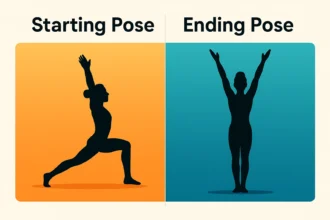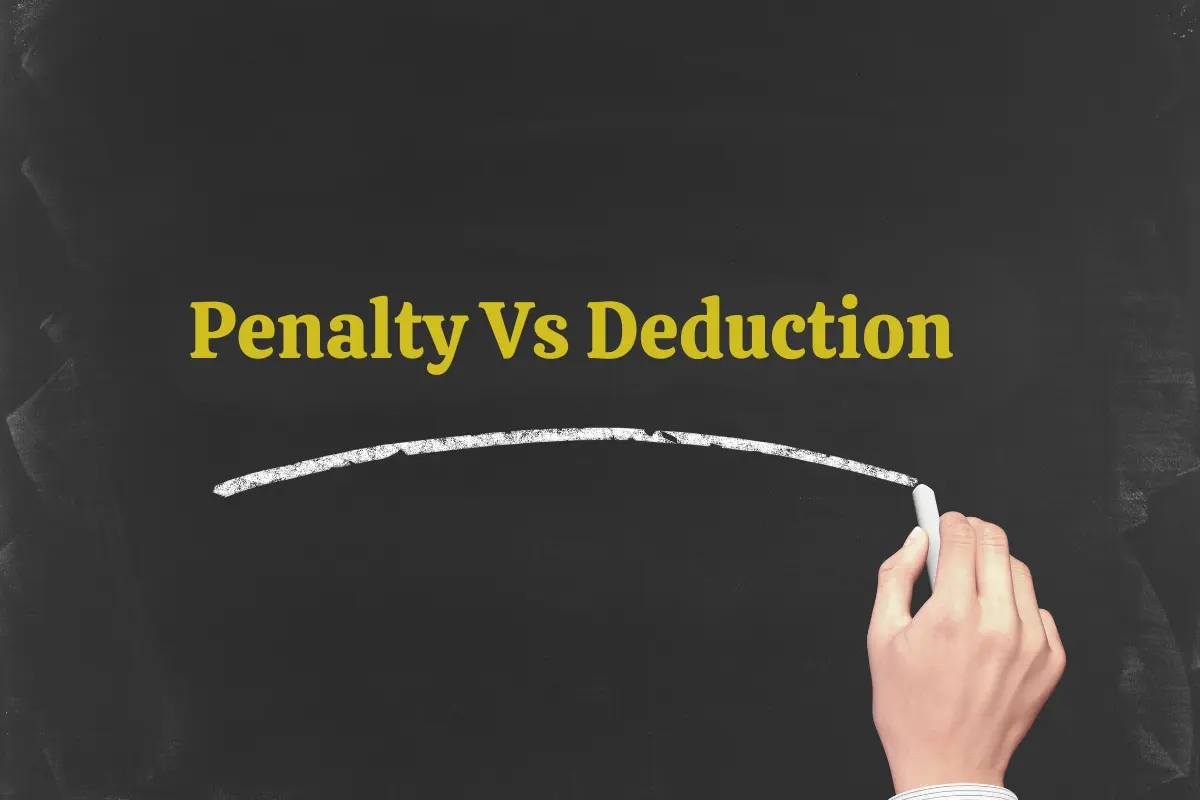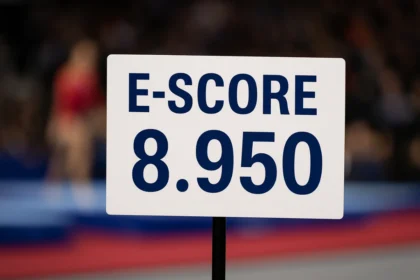Gymnastics scores are built from three moving parts: the D-score (Difficulty), E-score (Execution), and Neutral penalties.
But only two of those—D and E—live on the same line of the scoresheet. Because they’re applied by different judging groups at different moments, E-score deductions and neutral penalties shape a routine’s final total in very different ways.
What Are E-Score Deductions?
E-score deductions come from the Execution Panel (E-panel). These judges evaluate how well each skill is performed—from body position and control to landings, rhythm, and artistry. Every routine starts with a 10.000 execution score, and deductions are subtracted as the routine progresses.
Examples of Common E-Score Deductions:
| Mistake | Deduction Range |
|---|---|
| Bent knees or elbows | –0.10 to –0.30 |
| Flexed feet | –0.10 |
| Small hop on landing | –0.10 |
| Large step or lunge | –0.30 |
| Fall | –1.00 |
| Wobble on beam | –0.10 to –0.30 |
| Incomplete twist or salto | –0.10 to –0.50 |
| Poor rhythm or flow | –0.10 to –0.30 |
Each skill is judged individually, and multiple deductions can be taken on a single element. For instance, if a gymnast under-rotates a vault, bends their knees, and takes a large step, they may lose nearly a full point just from that one skill.
📌 Quick Facts:
- E-score deductions are cumulative.
- They reflect performance quality, not rules.
- They apply to all gymnastics disciplines.
- They can be challenged through an inquiry at most competitions.
What Are Neutral Penalties?
Neutral deductions are flat, rule-based penalties that have nothing to do with how a skill was performed. Instead, they relate to procedure, attire, boundaries, and timing. These are assessed by the Chief Judge, with help from Line and Time Judges.
Unlike E-score deductions, neutral penalties are subtracted from the final score after the D- and E-scores are calculated.
Common Neutral Penalties:
| Violation | Neutral Deduction |
|---|---|
| Stepping out of bounds (per step) | –0.10 |
| Exceeding floor or beam time limit | –0.10 |
| Starting too late after the signal | –0.30 |
| Coach spotting the gymnast | –0.50 to –1.00 |
| Wearing jewelry or improper attire | –0.10 |
| Second run-up on vault (balk) | –1.00 |
| Taking too long to remount after a fall | –0.30 |
| Unmarked mats covering boundaries | –0.10 each time |
These penalties are final—they cannot be challenged, and they apply the same way to every gymnast.
How the Numbers Are Set
When judges take off points in gymnastics, they do so using two very different systems—one for execution deductions and one for neutral penalties.
E-Score Deductions: Scaled by Severity
Execution deductions follow a four-step ladder based on the severity of each mistake. This scale is used throughout the routine, sometimes dozens of times, as the judges evaluate each skill and transition.
- Small Error – –0.10
- Medium Error – –0.30
- Large Error – –0.50
- Fall or Coach Spot – –1.00
Judges apply these values to a wide range of technical faults, including bent knees, leg separations, flexed feet, poor posture, balance wobbles, late turns, and stumbles on landings. While some deductions (like falls) are always large, many others require expert judgment to decide whether the error is small, medium, or large.
Neutral Penalties: Fixed Values from the Rulebook
Neutral deductions work differently. There’s no sliding scale or interpretation—just a set of fixed values tied to specific rule violations. These amounts are published in tables at the back of every official Code of Points, and judges simply apply them when a rule is broken.
The most common neutral deduction values are:
- –0.10 (e.g., stepping out of bounds)
- –0.30 (e.g., taking too long to remount the beam)
- –0.50 (e.g., coach assistance)
- –1.00 (e.g., second run-up on vault when only one is allowed)
These penalties are typically tied to time limits, boundary lines, attire regulations, and apparatus rules. Because they are objective and non-negotiable, all judges apply them the same way—no interpretation needed.
(Sources: gymnastics.sport)
How Each Affects the Final Score
In gymnastics, a gymnast’s total score is built step by step, and each type of deduction plays a distinct role in that calculation. The score is assembled in the following order:
- D-score: This is the difficulty score, based on the skills performed and any composition bonuses.
- E-score: This starts from a perfect 10.000, and judges subtract execution and artistry deductions throughout the routine.
- Neutral deductions: These are subtracted last, after D and E have been finalized.
The final formula looks like this:
Final Score = D + (10.000 – execution/artistry deductions) – neutral penalties
Why Order Matters:
Neutral penalties come off the bottom line, so they cancel out value from both difficulty and perfect execution. You can’t “out-execute” a neutral penalty. Once applied, it lowers your total—no matter how flawless your routine was.
What You Can and Cannot Protest
Not every deduction is open for review. Inquiries are allowed for certain judgment calls—but not for rule-based violations.
✅ You Can File an Inquiry For:
These involve judgment calls or math errors made by the D- or E-panel:
- Skill value (Was a skill given a C instead of a D?)
- Connection bonus (Was a bonus properly awarded or missed?)
- Composition requirement (Did the routine include all required element groups?)
- Execution/artistry deductions (Did the E-panel over-penalize or miss something?)
- Score calculation mistakes (Simple addition/subtraction errors)
🚫 You Cannot File an Inquiry For:
Anything that falls into the neutral deduction category is not open to protest:
- Boundary steps (out of bounds)
- Overtime (routine or remount time exceeded)
- Improper attire or visible jewelry
- Starting before or after the signal
- Second run-up on vault
- Coach interference, verbal cues, or spotting
These deductions are considered objective and are enforced by the Chief Judge or auxiliary judges (line/time judges). Once recorded, they are final and cannot be reviewed.
Key Takeaway
- E-score deductions judge how well each skill is performed. They can be appealed if something seems off.
- Neutral penalties judge whether the routine followed the meet’s rules—timing, space, attire, and behavior. These cannot be challenged.
Learn the difference, and you protect every tenth you earned the hard way on the apparatus.













